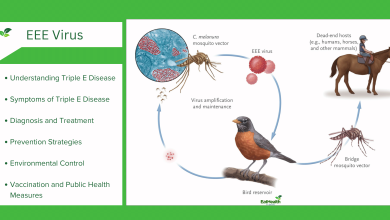Green Lifestyle, Healthy Living: A Win-Win Approach
Unlocking the Rewards of Sustainable Living

Green Lifestyle, Healthy Living: A Win-Win Approach
In an era marked by growing environmental concerns and a focus on personal well-being, the concept of a green lifestyle has gained significant traction. By making conscious choices that prioritize sustainability and health, individuals can create a win-win scenario that benefits both themselves and the planet. In this comprehensive guide, we’ll explore the symbiotic relationship between green living and healthy lifestyles, offering insights and practical tips for individuals ranging from high school students to seasoned experts.
Understanding Green Lifestyle:
A green lifestyle encompasses a holistic approach to living that prioritizes environmental sustainability, ethical consumption, and mindful practices. It involves making choices that minimize ecological impact, conserve natural resources, and promote overall well-being. From reducing carbon emissions and waste generation to supporting eco-friendly products and initiatives, embracing a green lifestyle is a proactive step towards fostering a healthier planet for current and future generations. Just as we know Green Living for Wellness: Environmental Impact on Health
Benefits of Green Lifestyle:
- Environmental Conservation: Adopting a green lifestyle helps reduce environmental degradation and preserve natural ecosystems. By minimizing resource consumption, reducing pollution, and supporting conservation efforts, individuals contribute to the protection of biodiversity and the mitigation of climate change.
- Personal Health and Well-being: Green living promotes health and well-being by encouraging habits that prioritize physical activity, nutritious eating, and mental wellness. From choosing organic foods and practicing outdoor activities to reducing exposure to harmful chemicals, green lifestyle choices have a positive impact on individual health outcomes.
- Cost Savings: Contrary to popular belief, green living can be cost-effective in the long run. By reducing energy consumption, water usage, and waste production, individuals can lower utility bills and save money over time. Additionally, adopting minimalist and sustainable consumption habits can lead to greater financial stability and reduced debt.
- Community Engagement: Embracing a green lifestyle fosters a sense of community and social responsibility. By participating in local environmental initiatives, supporting eco-friendly businesses, and advocating for sustainable policies, individuals contribute to building resilient and environmentally conscious communities.
Principles of Green Lifestyle:
- Reduce, Reuse, Recycle: The mantra of “reduce, reuse, recycle” forms the foundation of a green lifestyle. By minimizing waste generation, reusing materials whenever possible, and recycling items to extend their lifespan, individuals can significantly reduce their environmental footprint.
- Sustainable Consumption: Sustainable consumption involves making informed choices that prioritize products and services with minimal environmental impact. This includes opting for eco-friendly alternatives, supporting ethical and transparent supply chains, and avoiding products that contribute to deforestation, habitat destruction, or exploitation of natural resources.
- Energy Efficiency: Energy efficiency is a key aspect of green living, encompassing practices that reduce energy consumption and promote the use of renewable energy sources. From upgrading to energy-efficient appliances and lighting to insulating homes and utilizing renewable energy technologies, individuals can lower their carbon footprint and contribute to climate change mitigation efforts.
- Conservation and Preservation: Conservation and preservation efforts play a vital role in green lifestyle practices. This includes protecting natural habitats, promoting biodiversity, and supporting initiatives aimed at preserving endangered species and ecosystems. By advocating for conservation policies and participating in habitat restoration projects, individuals can safeguard the planet’s ecological balance.
Tips for Adopting a Green Lifestyle:
- Embrace Sustainable Transportation: Opt for walking, cycling, carpooling, or using public transportation whenever possible to reduce carbon emissions from transportation. Consider investing in electric vehicles or hybrid cars for a more eco-friendly commute.
- Minimize Waste: Practice mindful consumption habits by avoiding single-use plastics, opting for reusable alternatives, and composting organic waste. Reduce packaging waste by buying in bulk and choosing products with minimal packaging.
- Conserve Water: Conserve water by fixing leaks, installing water-saving fixtures, and practicing water-efficient habits such as shorter showers and turning off taps when not in use. Consider harvesting rainwater for irrigation purposes and landscaping.
- Eat Sustainably: Choose locally sourced, organic foods whenever possible to support sustainable agriculture practices and reduce carbon emissions associated with food transportation. Minimize food waste by meal planning, composting leftovers, and supporting initiatives that redistribute surplus food to those in need.
- Reduce Energy Consumption: Lower energy usage by turning off lights and appliances when not in use, investing in energy-efficient appliances and electronics, and maximizing natural lighting and ventilation in your home. Consider installing solar panels or utilizing community solar programs to generate renewable energy.
- Connect with Nature: Spend time outdoors engaging in activities such as hiking, gardening, or birdwatching to cultivate a deeper connection with the natural world. Participate in environmental education programs and volunteer opportunities to learn more about local ecosystems and conservation efforts.
Conclusion:
A green lifestyle offers a holistic approach to living that promotes environmental sustainability, personal well-being, and community resilience. By adopting mindful consumption habits, prioritizing energy efficiency, and supporting conservation initiatives, individuals can create a win-win scenario that benefits both themselves and the planet. Whether you’re a high school student embarking on your journey towards sustainability or a seasoned expert seeking to deepen your green living practices, embracing a green lifestyle is a powerful step towards building a healthier, more resilient future for all.




